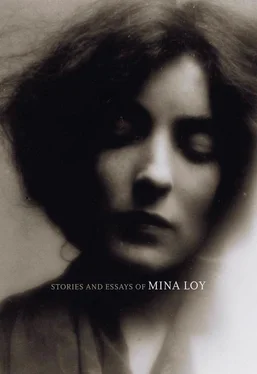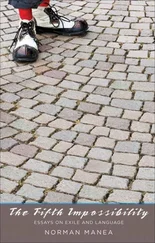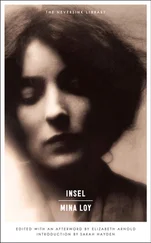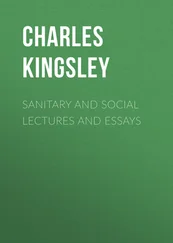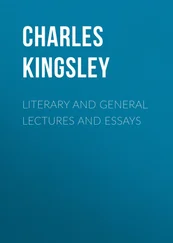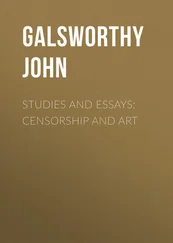Mina Loy - Stories and Essays of Mina Loy
Здесь есть возможность читать онлайн «Mina Loy - Stories and Essays of Mina Loy» весь текст электронной книги совершенно бесплатно (целиком полную версию без сокращений). В некоторых случаях можно слушать аудио, скачать через торрент в формате fb2 и присутствует краткое содержание. Год выпуска: 2011, Издательство: Dalkey Archive Press, Жанр: Современная проза, на английском языке. Описание произведения, (предисловие) а так же отзывы посетителей доступны на портале библиотеки ЛибКат.
- Название:Stories and Essays of Mina Loy
- Автор:
- Издательство:Dalkey Archive Press
- Жанр:
- Год:2011
- ISBN:нет данных
- Рейтинг книги:3 / 5. Голосов: 1
-
Избранное:Добавить в избранное
- Отзывы:
-
Ваша оценка:
- 60
- 1
- 2
- 3
- 4
- 5
Stories and Essays of Mina Loy: краткое содержание, описание и аннотация
Предлагаем к чтению аннотацию, описание, краткое содержание или предисловие (зависит от того, что написал сам автор книги «Stories and Essays of Mina Loy»). Если вы не нашли необходимую информацию о книге — напишите в комментариях, мы постараемся отыскать её.
Stories and Essays of Mina Loy
Stories and Essays of Mina Loy — читать онлайн бесплатно полную книгу (весь текст) целиком
Ниже представлен текст книги, разбитый по страницам. Система сохранения места последней прочитанной страницы, позволяет с удобством читать онлайн бесплатно книгу «Stories and Essays of Mina Loy», без необходимости каждый раз заново искать на чём Вы остановились. Поставьте закладку, и сможете в любой момент перейти на страницу, на которой закончили чтение.
Интервал:
Закладка:
“my companion” reads “my [ torn page ] p [ torn page ]”— ed.
Above “We pressed” reads “breasted”— ed.
“with breasts” was “with disparted breasts”
“dark where the parted” was “dark. [ new paragraph ] The parted”
“over the steel ribbons” was “over steel ribbons”
After “of the railroad” was “on either side”
PAGE 142
“sun —” reads “sun, — ”— ed.
“clucking” was “with clucking”
“appraisals of the passengers on the train” was “appraisals on the train”
PAGE143
“good thing at once” was “good thing at a time”
“even the spawn” was “even the sprand”
“entertaining, and the Mexican” was “entertaining, the Mexican”
“warmed to it” was “warmed to it [ three or four unclear words ] myself”
PAGE 144
“bar-room” reads “Bar-room”— ed.
“punctuated by the sting” reads “punctuated, or by the sting” — ed.
“as soon as bought” was “as soon as they bought”
PAGE 145
“pitch black resting place” was “pitch dark resting place”
“of his bunch” was “of bunch”
“into the deluge” was “into the [ unclear word ]”—could be “high go”— ed.
“For I felt” was “And I felt”
PAGE 146
“like a symbol” was “as a symbol”
“my unprofitable companionship”—“companionship” is pencilled in by hand
“salesman’s” reads “sales-[ unclear letters ]’s”— ed.
“Reanimated. . copper gleam” was “Reanimated by the man’s cajoling evocations for his convenience of her consumed ado- lescence, from under the copper gleam”—above “the copper” Loy has pencilled a second “under”— ed.
PAGE 147
“against her huckster” was “against huckster”
“she had found her home” was “she had her home”
“coated her consciousness” reads “coat [ torn page ] consciousness” — ed.
“ethical impropriety” was “ethical a”
After “a transcendental sanction” there is a blank line, and then the manuscript continues:
The inhabitants of the Isthmus of Tehuantepec filled the third class carriages stacking the wooden seats with em- broidered human clusters.
The women gave me coffee in a cocoanut bowl exclaimi
DRAMA
CRYSTAL PANTOMIME
(6:155)
Loy’s ballet consists of a single typescript of sixteen double-spaced pages with very few handwritten editorial changes throughout; these are noted below.
PAGE 151
“teeter” was “tot-titters”
PAGE 152
“while mixed groups play shuttlecock and battledore” is a later, handwritten addition
After “a balance” reads, in type and in the midst of an otherwise blank half page, “(Follow with page 3)”— ed.
PAGE 153
“ The Spirit of the Rose ” reads “the spirit of the rose”— ed.
“from the back if possible in order” was “from the back in order”
PAGE 154
“poker-swan-like effect” reads “poker-swan like effect”— ed.
PAGE 155
“all-over tights” reads “all over tights”— ed.
PAGE 156
“youth remains” was “youth, remaining”
PAGE 157
“The barometer house. . spirit of the rainbow” is in brackets in typescript— ed.
“arms the (enormous)” reads “arms the (an enormous)”— ed.
PAGE 158
Above “transparent sequins” reads, in handwriting, “or plastic drops (better)”— ed.
“long green glass hair” was “long yellow glass hair”
After “his legs” reads, in handwriting, “It might be better to keep the rainbow stain on the youth’s body / he can still dance himself dry ”— ed.
PAGE 159
“the dance of the jelly-fish” reads “ ‘the dance of the jelly fish’ ”— ed.
“domes and long” was “domes along”
PAGE 160
“yellow gilt shield, sword, helmet” reads “yellow gilt shield (espinal yel) sword, helmet”— ed.
PAGE 161
Crossed out at the end of the typescript, also in type, is the following:

On a wire a stiff figure, like the ones in “Cartesian” bottles, only carrying a bunch of colored air balloons — symbolizing desire — whirls round and round in the crystal ball with a small child after him — only for a brief moment— Then the first scene evolves.
THE PAMPERERS
“The Pamperers” was first published in The Dial in 1920 (69:1), and was the inaugural work of the “Modern Forms” section of that periodical. Only a fragment of the published text exists in Loy’s papers. The play was published a second time in the Performing Arts Journal in 1996, where it was edited and introduced by Julie Schmid. With some minor adjustments to punctuation and layout, it is The Dial version that is used here.
While most critics concur that “The Pamperers” was written in 1916, Schmid suggests that Loy may have started writing it in 1915 (“Mina Loy’s Futurist Theatre,” Performing Arts Journal (18:1) 1996, 1–7, p. 5). Susan Gilmore contends that as late as 1917, Loy described “The Pamperers” as a work in progress in an interview she gave to The New York Evening Sun (“Imna, Ova, Mongrel, Spy,” ML: W & P , 271–318, p. 281). According to Burke, Loy gave some thought to staging “The Pamperers” in 1916, shortly after starring in Alfred Kreymborg’s Lima Beans opposite William Carlos Williams ( BM 214, 222). For additional critics who date the play as a product of 1916, see Virginia Kouidis, Mina Loy: American Modernist Poet (Baton Rouge: Louisiana State UP, 1980, p. 16) and Janet Lyon, “Mina Loy’s Pregnant Pauses: The Space of Possibility in the Florence Writings” ( ML: W & P , 379–402, p. 397).
In “Little Lusts and Lucidities: Reading Mina Loy’s Love Songs ,” Jeffrey Twitchell-Waas argues that in “The Pamperers,” Loy satirises not FUTURISM per se but rather, the Futurists’ betrayal of their own radical ideals ( ML: W & P , 111–130, p. 113). With that satirical impulse wholly in view, there are a number of references — veiled and overt — to cultural figures in “The Pamperers”. Loy’s friend and the founder of Italian FUTURISM F. T. Marinetti (1876–1944) merits direct mention, as does the Florentine Renaissance painter, Benozzo Gozzoli (1421–1497). The French composer Claude-Achille Debussy (1862–1918) appears in an introductory list; “Watsiswinski” or “Stavinski” likely refers to the Russian-born composer Igor Fyodorovich Stravinsky (1882–1971). “Isadora Allen” is a nod to the founder of modern dance, Isadora Duncan (1877–1927), who Loy befriended during her early years in Florence, 1907–10 ( BM 110–11). Loy wrote a long poem about Duncan in 1952; a segment from that work appears in The Last Lunar Baedeker under the title “Songge Byrd” (238).
ROSA
(6:175)
Loy attributes “Rosa” to one “Bjuna Darnes”—a none-too-subtle spoonerism of the name of the American writer Djuna Barnes (1892–1982). Loy and Barnes met in New York around 1920–21 and maintained their friendship in various locations around the globe, including Berlin and Paris, until Loy’s death in 1966 ( BM 295, 313, 362). Loy infamously features in Barnes’s Ladies Almanack (1928) as Patience Scalpel, who has a voice “as cutting in its Derision as a surgical Instrument” (Champaign, IL: Dalkey Archive Press, 1995, p. 12). While it is tempting to read the weapon-wielding Rosa as Loy’s instigation of or riposte to Barnes’s parody, her papers yield little in the way of evidence, as only one undated typescript of this play exists. “Rosa” concludes with Loy’s characteristic self-attribution, “MINA LOY”.
Читать дальшеИнтервал:
Закладка:
Похожие книги на «Stories and Essays of Mina Loy»
Представляем Вашему вниманию похожие книги на «Stories and Essays of Mina Loy» списком для выбора. Мы отобрали схожую по названию и смыслу литературу в надежде предоставить читателям больше вариантов отыскать новые, интересные, ещё непрочитанные произведения.
Обсуждение, отзывы о книге «Stories and Essays of Mina Loy» и просто собственные мнения читателей. Оставьте ваши комментарии, напишите, что Вы думаете о произведении, его смысле или главных героях. Укажите что конкретно понравилось, а что нет, и почему Вы так считаете.
